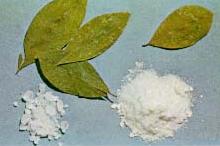Teenagers abuse a variety of drugs, both legal and illegal. Some
of the most commonly used drugs include alcohol, marijuana, inhalants,
stimulants (cocaine, crack, and speed), LSD, PCP, prescription
medications, opiates, heroin, steroids, tobacco, and club drugs,
like Ecstasy (MDMA).




Drugs and
Youth Violence
By Balwant Sanghera,
BC,Canada
Recent rash of shootings in the Lower Mainland of B.C. has again
brought the problem of dugs and youth violence to the forefront.
During the past few years, a large number of people have lost
their lives in this process. Not only that, a number of innocent
bystanders have also become the victims of this insanity. The
South Asian community alone has lost close to 110 young men, mostly
in their twenties, to drugs and violence.
Various police forces have been doing a commendable job in tackling
this issue. As a result of some public pressure, there seems to
be a more co-ordinated effort between them now than before. However,
the law enforcement agencies can do only so much. In order to
get a handle on this unfortunate development, there is a strong
need for a concerted effort and appropriate resources.
Drugs and violence transcend all ethnic, cultural, religious
and geographical boundaries. Individuals and groups that engage
in anti social and violent activities seem to be increasing at
an alarming rate. According to recent media reports, there are
close to 129 such groups operating in British Columbia. This should
be a matter of great concern to every citizen.
Individuals who have a tendency to engage in criminal activity
or those who perpetrate violence are not born as such. Usually,
they are the product of our society. Some are forced by circumstances
whereas others enter this shady world on their own accord. To
some, the temptation may be easy/fast money whereas others may
be looking for power and prestige. For some, it may be a sense
of security by belonging to a group regardless of what that group
does or stands for.
A recently conducted survey for Department of Public Safety
revealed that a vast majority of Canadians believe that crime
is a very serious issue in Canada. They want improvements in the
federal government’s current level of effort to combat it.
Combating youth violence and criminal activity is not an easy
task. Dr. Mark Totten, Youth Services Bureau of Ottawa, has worked
extensively with youth involved in crime. He has suggested a number
of initiatives that have proven successful in preventing youth
from involvement in crime. These include the following: